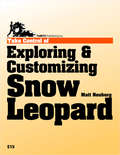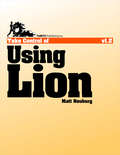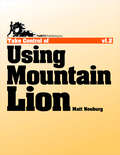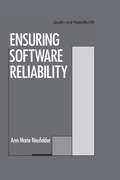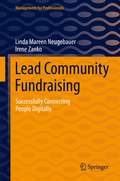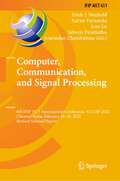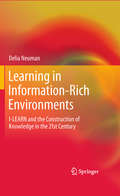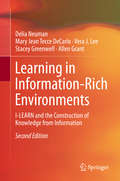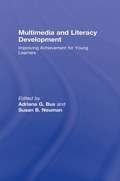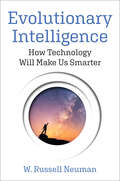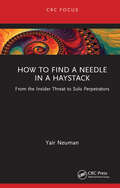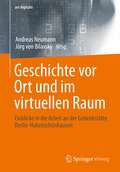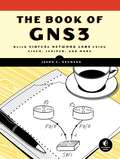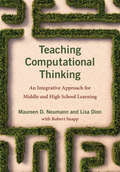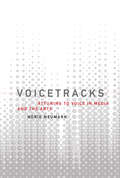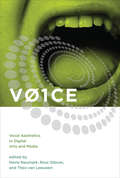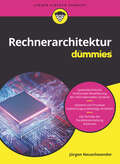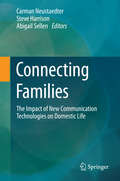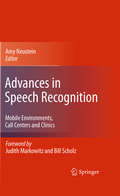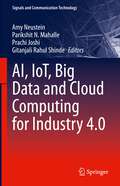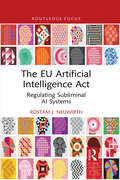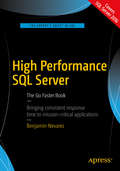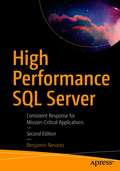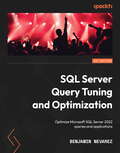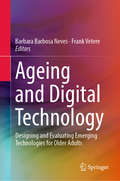- Table View
- List View
Take Control of Exploring & Customizing Snow Leopard
by Matt NeuburgAlong the way, you'll learn useful Mac OS X skills, including how to: Make your default Finder window look the way you want. Set up your Dock for your needs and screen. Get around using the keyboard. Use any special features built into your laptop's trackpad. Zoom your screen and use tricks to help tired or weak eyes. Type special characters, and type in multiple languages. Find windows with Expos and organize them with Spaces. Set up Time Machine backups the smart way. Set up Software Update to match your personal style. Search for stuff on your Mac. You'll also gain confidence to explore Snow Leopard's features further. These include new capabilities like automatic fixing of misspelled words and text substitution as you type, totally revamped Services, better control over Time Machine backups, whizzy new Expos options, and the new keyboard switcher for multi-lingual Mac users. Matt also reminds you about how best to to customize the sidebar in your Finder windows, configure Open and Save dialogs, and arrange items on your toolbar for quick access, and he covers the Path Bar, Dashboard, status menus, login items, zooming controls, sleep vs. hibernation for laptops, and double-headed scroll arrows. Matt even explains how Leopard's contextual menu plug-ins and QuickTime Pro disappear in Snow Leopard. He also covers a handful of important third-party utilities, and he provides easy-as-can-be steps for a script that even beginners can run to place a new Finder window in exactly the right spot. Specific questions answered in this ebook include: Making things look right:Where is the elusive checkbox for making my menu bar look solid? Where'd the flag icon on my menu bar come from? How do I best position and configure my Dock? How do I add an item to "Search For" in my Finder window sidebar? What folders should I put in "Places" in the Finder window sidebar? How do I change which categories appear on my search results menu? How do I customize my Desktop with a special color or photo? Using a keyboard, trackpad, or mouse:How do I turn off or reassign the Caps Lock key? How do I start Expos with my mouse? How can I move the mouse very precisely? How do I change the size of my mouse pointer icon? What's the purpose of the "Ignore accidental trackpad input" checkbox? What is the keyboard shortcut for choosing a menu item without the mouse? What if I don't want my function keys to do hardware-related things like muting and screen dimming? Getting things done:How do I stop all the disk activity when I first boot Snow Leopard? Where's the interface for "tagging" files? How do I limit who my child can exchange email with? How can I set up my fonts so they are easier to work with? How can I keep certain windows in specific Spaces? How do I identify-and delete-huge files in my Time Machine backup? How can I easily make my laptop sleep more quickly?
Take Control of Using Lion
by Matt NeuburgOther new-in-Lion-related questions that you'll find answers to are these: What's the fun new way of entering accented characters? Where'd my scrollbars go? How do I make the text in my Finder window sidebar larger? How do I sort items in a Finder window, and what does "Arrange" mean? Where are the Appearance and the Accounts System Preference panes? How do I change the size of my mouse pointer icon? What's this All My Files entry in my sidebar? What's the new picture-in-a-picture zooming option? Where'd my user Library go? You'll also learn how to: Be nimble and efficient finding your documents and applications. Take advantage of Lion's revised Open and Save dialogs. Make the screen easy on your eyes. Reduce "pane-ful" clutter in System Preferences. Enjoy the new Lion look of spelling corrections. Have your Mac read to you in many great new voices. Organize your fonts so you can easily format your text. Find the elusive checkbox for making the menu bar look solid.
Take Control of Using Mountain Lion
by Matt NeuburgYou'll become comfortable with these important Mountain Lion features: Notifications: Learn how to view, organize, and control your notifications--so that they don't control you! Gatekeeper: Understand the new Gatekeeper security system, and how you can bypass it when necessary. Resume: Enjoy the Resume feature that re-opens applications and windows when you restart your Mac or relaunch a program. Or learn how to shut it off. Auto Save: Some applications don't have Save commands in Mountain Lion! Learn how to save if you need to, and what to do if OS X saves something you don't want--and discover a new option in Mountain Lion that refines Auto Save in an important way. iCloud: Read what Matt thinks is interesting about iCloud, plus come to a full understanding of how to work with Documents in the Cloud in OS X--including how to handle the new Open dialog. Window management: Get help with resizing your windows, find out about full-screen mode, and go way beyond the basics with Mission Control and desktop spaces. Gestures: If you have a trackpad or Magic Mouse, get ready for more gestures in Mountain Lion! You'll learn how handle these core customizations: Menu bar: Enable (or disable) menu icons at the right side of the menu bar, and locate the elusive checkbox for making the menu bar look solid. Finder windows: Set up the default Finder window in a smart way that suits your needs. Dock: Take control of your Dock's appearance, location, and contents. Launchpad: Move and remove items in Launchpad--a close cousin to the iOS Home screen--and make "folders" that contain multiple apps. Screen: Calibrate your screen so it looks good to you, and learn how to make choppy text look smoother. Desktop: Set which elements appear on the Desktop, and pick a custom background image. Plus you'll find the answers to these customization-related questions: How do I turn off notification banners and alerts, for all my applications, all at once? Where did my scrollbars go? How do I make the text in my Finder window sidebar larger? How do I change the size of my mouse pointer icon? How do I create a custom keyboard shortcut for a menu item? Chockablock with information, the ebook also teaches you how to: Activate the new Voice Dictation feature. Issue the nifty keyboard shortcut for the handy Accessibility Options dialog. Find missing or deeply buried files quickly. Enter accented characters--or type in a different language! Install, delete, and organize fonts. Let your fingers do the walking by choosing menu items with the keyboard. Type a shortcut to "spring" open a closed folder while dragging a file onto it. Set up a new user account--and limit its powers. Zoom with picture-in-a-picture. Find your hidden user Library--and keep it found. ...and much more!
Ensuring Software Reliability (Quality and Reliability #Vol. 38)
by Ann Marie NeufelderExplains how software reliability can be applied to software programs of all sizes, functions and languages, and businesses. This text provides real-life examples from industries such as defence engineering, and finance. It is aimed at software and quality assurance engineers and graduate students.
Lead Community Fundraising: Successfully Connecting People Digitally (Management for Professionals)
by Linda Mareen Neugebauer Irene ZankoThe world is changing, and so are our donors. In the future, it will become even more important for organizations to find leads, supporters and new donors online - because digitization is a bottleneck in fundraising.This book highlights universal fundraising opportunities. It explains the fundamentals of lead community fundraising and why, especially in digital times, it is important to start with the people - the community. The main topic of the book is the current state of digital fundraising, which is becoming more and more important. More than 45 examples from international fundraising practices provide a valuable foundation for all practitioners in this field.
Computer, Communication, and Signal Processing: 6th IFIP TC 5 International Conference, ICCCSP 2022, Chennai, India, February 24–25, 2022, Revised Selected Papers (IFIP Advances in Information and Communication Technology #651)
by Erich J. Neuhold Xavier Fernando Joan Lu Selwyn Piramuthu Aravindan ChandraboseThis book constitutes the refereed proceedings of the 6th International Conference on Computer, Communication, and Signal Processing, ICCSP 2022, held in Chennai, India, in February 2022.* The 21 full and 2 short papers presented in this volume were carefully reviewed and selected from 111 submissions. The papers are categorized into topical sub-headings: artificial intelligence and machine learning; Cyber security; and internet of things.*The conference was held as a virtual event due to the COVID-19 pandemic.
Learning in Information-Rich Environments
by Delia NeumanThe amount and range of information available to today's students--and indeed to all learners--is unprecedented. Phrases like "the information revolution", "the information (or knowledge) society", and "the knowledge economy" underscore the truism that our society has been transformed by virtually instantaneous access to virtually unlimited information. Thomas Friedman tells us that "The World Is Flat" and that we must devise new political and economic understandings based on the ceaseless communication of information from all corners of the world. The Bush administration tells us that information relating to the "war on terrorism" is so critical that we must allow new kinds of surveillance to keep society safe. Teenage subscribers to social-computing networks not only access information but enter text and video images and publish them widely--becoming the first adolescents in history to be creators as well as consumers of vast quantities of information. If the characteristics of "the information age" demand new conceptions of commerce, national security, and publishing--among other things--it is logical to assume that they carry implications for education as well. In fact, a good deal has been written over the last several decades about how education as a whole must transform its structure and curriculum to accommodate the possibilities offered by new technologies. Far less has been written, however, about how the specific affordances of these technologies--and the kinds of information they allow students to access and create--relate to the central purpose of education: learning. What does "learning" mean in an information-rich environment? What are its characteristics? What kinds of tasks should it involve? What concepts, strategies, attitudes, and skills do educators and students need to master if they are to learn effectively and efficiently in such an environment? How can researchers, theorists, and practitioners foster the well-founded and widespread development of such key elements of the learning process? This book explores these questions and suggests some tentative answers. Drawing from research and theory in three distinct but related fields--learning theory, instructional systems design, and information studies--it presents a way to think about learning that responds directly to the actualities of a world brimming with information. The book is grounded in the work of such key figures in learning theory as Bransford and Anderson & Krathwohl. It draws on such theorists of instructional design as Gagne, Mayer, and Merrill. From information studies, it uses ideas from Buckland, Marchionini, and Wilson (who is known for his pioneering work in "information behavior"--that is, the full range of information seeking and use). The book breaks new ground in bringing together ideas that have run in parallel for years but whose relationship has not been fully explored.
Learning in Information-Rich Environments: I-LEARN and the Construction of Knowledge from Information
by Delia Neuman Mary Jean Tecce DeCarlo Vera J. Lee Stacey Greenwell Allen GrantThe amount and range of information available to today’s students—and indeed to all learners—is unprecedented. If the characteristics of “the information age” demand new conceptions of commerce, national security, and publishing—among other things—it is logical to assume that they carry implications for education as well. Little has been written, however, about how the specific affordances of these technologies—and the kinds of information they allow students to access and create—relate to the central purpose of education: learning. What does “learning” mean in an information-rich environment? What are its characteristics? What kinds of tasks should it involve? What concepts, strategies, attitudes, and skills do educators and students need to master if they are to learn effectively and efficiently in such an environment? How can researchers, theorists, and practitioners foster the well-founded and widespread development of such key elements of the learning process? This second edition continues these discussions and suggests some tentative answers. Drawing primarily from research and theory in three distinct but related fields—learning theory, instructional systems design, and information studies—it presents a way to think about learning that responds directly to the actualities of a world brimming with information. The second edition also includes insights from digital and critical literacies and provides a combination of an updated research-and-theory base and a collection of instructional scenarios for helping teachers and librarians implement each step of the I-LEARN model. The book could be used in courses in teacher preparation, academic-librarian preparation, and school-librarian preparation.
Multimedia and Literacy Development: Improving Achievement for Young Learners
by Susan B. Neuman Adriana G. BusRepresenting the state of the art in multimedia applications and their promise for enhancing early literacy development, this volume broadens the field of reading research by looking beyond print-only experiences to young readers’ encounters with multimedia stories on the Internet and DVD. Multimedia storybooks include, in addition to static pictures and written text, features such as oral text, animations, sounds, zooms, and scaffolds designed to help convey meaning. These features are changing how young children read text, and also provide technology-based scaffolds for helping struggling readers. Multimedia and Literacy Development reports experimental research and practices with multimedia stories indicating that new dimensions of media contribute to young children’s ability to understand stories and to read texts independently. This is the first synthesis of evidence-based research in this field. Four key themes are highlighted: Understanding the multimedia environment for learning Designing multimedia applications for learning New approaches to storybook reading Multimedia applications in classroom instruction. Written in jargon-free language for an international audience of students in university courses on literacy and information technology, researchers, policymakers, program developers, and media specialists, this volume is essential reading for all professionals interested in early literacy and early interventions.
Evolutionary Intelligence: How Technology Will Make Us Smarter
by W. Russell NeumanA surprising vision of how human intelligence will coevolve with digital technology and revolutionize how we think and behave.It is natural for us to fear artificial intelligence. But does Siri really want to kill us? Perhaps we are falling into the trap of projecting human traits onto the machines we might build. In Evolutionary Intelligence, Neuman offers a surprisingly positive vision in which computational intelligence compensates for the well-recognized limits of human judgment, improves decision making, and actually increases our agency. In artful, accessible, and adventurous prose, Neuman takes the reader on an exciting, fast-paced ride, all the while making a convincing case about a revolution in computationally augmented human intelligence.Neuman argues that, just as the wheel made us mobile and machines made us stronger, the migration of artificial intelligence from room-sized computers to laptops to our watches, smart glasses, and even smart contact lenses will transform day-to-day human decision making. If intelligence is the capacity to match means with ends, then augmented intelligence can offer the ability to adapt to changing environments as we face the ultimate challenge of long-term survival.Tapping into a global interest in technology&’s potential impacts on society, economics, and culture, Evolutionary Intelligence demonstrates that our future depends on our ability to computationally compensate for the limitations of a human cognitive system that has only recently graduated from hunting and gathering.
How to Find a Needle in a Haystack: From the Insider Threat to Solo Perpetrators
by Yair NeumanSearching for a needle in a haystack is an important task in several contexts of data analysis and decision-making. Examples include identifying the insider threat within an organization, the prediction of failure in industrial production, or pinpointing the unique signature of a solo perpetrator, such as a school shooter or a lone wolf terrorist. It is a challenge different from that of identifying a rare event (e.g., a tsunami) or detecting anomalies because the "needle" is not easily distinguished from the haystack. This challenging context is imbued with particular difficulties, from the lack of sufficient data to train a machine learning model through the identification of the relevant features and up to the painful price of false alarms, which might cause us to question the relevance of machine learning solutions even if they perform well according to common performance criteria. In this book, Prof. Neuman approaches the problem of finding the needle by specifically focusing on the human factor, from solo perpetrators to insider threats. Providing for the first time a deep, critical, multidimensional, and methodological analysis of the challenge, the book offers data scientists and decision makers a deep scientific foundational approach combined with a pragmatic practical approach that may guide them in searching for a needle in a haystack.
Geschichte vor Ort und im virtuellen Raum: Einblicke in die Arbeit an der Gedenkstätte Berlin-Hohenschönhausen (ars digitalis)
by Andreas Neumann Jörg Von BilavskyDie Arbeit in einer Gedenkstätte ist vielgestaltig und interdisziplinär: Sie umfasst Ausstellungen, historisch-politische Bildung, Forschung und nicht zuletzt die Arbeit mit Zeitzeuginnen und Zeitzeugen, die dem Publikum an diesem Ort ihre ganz persönliche Geschichte nahebringen. Der Band gibt Einblicke in die verschiedenen Arbeitsbereiche der Gedenkstätte in der ehemaligen zentralen Untersuchungshaftanstalt des Ministeriums für Staatssicherheit der DDR in Berlin-Hohenschönhausen. Neue Forschungsergebnisse zur Repressionsgeschichte in der SBZ/DDR werden ebenso vorgestellt wie Ausstellungsentwürfe und didaktische Konzepte zur Vermittlung von Wissen und Werten. Die Digitalisierung spielt in diesem Bereich der Erinnerungskultur schon jetzt eine zentrale Rolle, was sich im vorliegenden Band spiegelt.
The Book of GNS3: Build Virtual Network Labs Using Cisco, Juniper, and More
by Jason C. NeumannGNS3 is open source software that emulates Cisco router and switch hardware to simulate complex networks. You can use GNS3 on any computer to experiment with various router configurations, study for that next big Cisco certification, or build the ubernetwork of your wildest dreams—all without plugging in a single physical network cable.The Book of GNS3 will teach you how to harness the powerful GNS3 software to create your own virtual networks with Cisco and Juniper devices. Hands-on tutorials throughout show you how to:–Configure Cisco IOS and ASA devices in GNS3–Add Juniper routers to your projects with VirtualBox and QEMU–Connect GNS3’s hub, switch, and cloud devices to physical hardware–Integrate Cisco IOU virtual machines for advanced switching features–Simulate a Cisco access server to practice managing devices–Build bigger labs by distributing project resources across multiple computersWhy set up all of that expensive physical hardware before you know whether it will all work together? Learn how to build virtual networks with The Book of GNS3, and stop reconfiguring your lab every time you want to test something new.
Teaching Computational Thinking: An Integrative Approach for Middle and High School Learning
by Maureen D. Neumann Lisa DionA guide for educators to incorporate computational thinking—a set of cognitive skills applied to problem solving—into a broad range of subjects.Computational thinking—a set of mental and cognitive tools applied to problem solving—is a fundamental skill that all of us (and not just computer scientists) draw on. Educators have found that computational thinking enhances learning across a range of subjects and reinforces students&’ abilities in reading, writing, and arithmetic. This book offers a guide for incorporating computational thinking into middle school and high school classrooms, presenting a series of activities, projects, and tasks that employ a range of pedagogical practices and cross a variety of content areas. As students problem solve, communicate, persevere, work as a team, and learn from mistakes, they develop a concrete understanding of the abstract principles used in computer science to create code and other digital artifacts. The book guides students and teachers to integrate computer programming with visual art and geometry, generating abstract expressionist–style images; construct topological graphs that represent the relationships between characters in such literary works as Harry Potter and the Sorcerer&’s Stone and Romeo and Juliet; apply Newtonian physics to the creation of computer games; and locate, analyze, and present empirical data relevant to social and political issues. Finally, the book lists a variety of classroom resources, including the programming languages Scratch (free to all) and Codesters (free to teachers). An accompanying website contains the executable programs used in the book&’s activities.
Voicetracks: Attuning to Voice in Media and the Arts (Leonardo)
by Norie NeumarkThe affects, aesthetics, and ethics of voice in the new materialist turn, explored through encounters with creative works in media and the arts.Moved by the Aboriginal understandings of songlines or dreaming tracks, Norie Neumark's Voicetracks seeks to deepen an understanding of voice through listening to a variety of voicing/sound/voice projects from Australia, Europe and the United States. Not content with the often dry tone of academic writing, the author engages a “wayfaring” process that brings together theories of sound, animal, and posthumanist studies in order to change the ways we think about and act with the assemblages of living creatures, things, places, and histories around us.Neumark evokes both the literal—the actual voices within the works she examines—and the metaphorical—in a new materialist exploration of voice encompassing human, animal, thing, and assemblages. She engages with artists working with animal sounds and voices; voices of place, placed voices in installation works; voices of technology; and “unvoicing,” disturbances in the image/voice relationship and in the idea of what voice is. She writes about remixes, the Barbie Liberation Organisation, and breath in Beijing, about cat videos, speaking fences in Australia, and an artist who reads (to) the birds. Finally, she considers ethics and politics, and describes how her own work has shaped her understandings and apprehensions of voice.
VOICE: Vocal Aesthetics in Digital Arts and Media (Leonardo)
by Norie Neumark Ross Gibson Theo van LeeuwenPerspectives on the voice and technology, from discussions of voice mail and podcasts to reflections on dance and sound poetry.Voice has returned to both theoretical and artistic agendas. In the digital era, techniques and technologies of voice have provoked insistent questioning of the distinction between the human voice and the voice of the machine, between genuine and synthetic affect, between the uniqueness of an individual voice and the social and cultural forces that shape it. This volume offers interdisciplinary perspectives on these topics from history, philosophy, cultural theory, film, dance, poetry, media arts, and computer games. Many chapters demonstrate Lewis Mumford's idea of the “cultural preparation” that precedes technological innovation—that socially important new technologies are foreshadowed in philosophy, the arts, and everyday pastimes. Chapters cover such technologies as voice mail, podcasting, and digital approximations of the human voice. A number of authors explore the performance, performativity, and authenticity [(or 'authenticity effect') of voice in dance, poetry, film, and media arts]; while others examine more immaterial concerns—the voice's often-invoked magical powers, the ghostliness of disembodied voices, and posthuman vocalization. [The chapters evoke an often paradoxical reassertion of the human in the use of voice in mainstream media including recorded music, films, and computer games.ContributorsMark Amerika, Isabelle Arvers, Giselle Beiguelman, Philip Brophy, Ross Gibson, Brandon LaBelle, Thomas Levin, Helen Macallan, Virginia Madsen, Meredith Morse, Norie Neumark, Andrew Plain, John Potts, Theresa M. Senft, Nermin Saybasili, Amanda Stewart, Axel Stockburger, Michael Taussig, Martin Thomas, Theo van Leeuwen, Mark Wood
Rechnerarchitektur für Dummies (Für Dummies)
by Jürgen NeuschwanderDieses Buch bietet eine kompakte, verständliche Einführung in das Thema "Rechnerarchitektur". Alle heute essenziellen Themengebiete werden behandelt. Der Schwerpunkt des Buches liegt auf der systemtechnischen funktionalen Beschreibung von Rechnern, ihren Komponenten und Prozessen, ohne auf die unzähligen Details dedizierter Systeme einzugehen. Die funktionale Darstellung mittels geeigneter Modellierungstechniken erlaubt das grundsätzliche Verständnis dieser Systeme, unabhängig von der jeweiligen Art der Realisierung und dem aktuellen Stand der Technologie. So müssen Sie keine Sorge haben, dass Sie sich bei der Prüfungsvorbereitung in den Details verlieren.
Connecting Families: The Impact of New Communication Technologies on Domestic Life (Computer Supported Cooperative Work Ser.)
by Carman Neustaedter Steve Harrison Abigail SellenNew technologies are radically changing the way that families connect with one another: we can text our teenagers from work, eat dinner with far-away parents via video link, and instantly upload and share photos after a family day out. Whether we are bridging time or distance, and whether we are enhancing our closest relationships or strengthening the bonds of extended family, as computer technologies alter the communication landscape, they in turn are changing the way we conduct and experience family life. This state of the art volume explores the impact of new communication systems on how families interact - how they share their lives and routines, engage in social touch, and negotiate being together or being apart - by considering a range of different family relationships that shape the nature of communication. Composed of three sections, the first looks at what is often the core of a 'family', the couple, to understand the impact of technology on couple relationships, communication, and feelings of closeness. The second section studies immediate families that have expanded beyond just the individual or couple to include children. Here, the emphasis is on connection for communication, coordination, and play. The third section moves beyond the immediate family to explore connections between extended, distributed family members. This includes connections between adult children and their parents, grandparents and grandchildren, and adult siblings. Here family members have grown older, moved away from 'home', and forged new families. Researchers, designers and developers of new communication technologies will find this volume invaluable. Connecting Families: The Impact of New Communication Technologies on Domestic Life brings together the most up-to-date studies to help in understanding how new communication technologies shape - and are shaped by - family life, and offers inspiration and guidance for design by making clear what families need and value from technological systems.
Advances in Speech Recognition: Mobile Environments, Call Centers and Clinics
by Amy NeusteinThis volume is comprised of contributions from eminent leaders in the speech industry, and presents a comprehensive and in depth analysis of the progress of speech technology in the topical areas of mobile settings, healthcare and call centers. The material addresses the technical aspects of voice technology within the framework of societal needs, such as the use of speech recognition software to produce up-to-date electronic health records, not withstanding patients making changes to health plans and physicians. Included will be discussion of speech engineering, linguistics, human factors analysis, medical informatics, business and information technology, electronics and communications engineering, all integrated into a cohesive work.
AI, IoT, Big Data and Cloud Computing for Industry 4.0 (Signals and Communication Technology)
by Amy Neustein Parikshit N. Mahalle Prachi Joshi Gitanjali Rahul ShindeThis book presents some of the most advanced leading-edge technology for the fourth Industrial Revolution -- known as “Industry 4.0.” The book provides a comprehensive understanding of the interconnections of AI, IoT, big data and cloud computing as integral to the technologies that revolutionize the way companies produce and distribute products and the way local governments deliver their services. The book emphasizes that at every phase of the supply chain, manufactures are found to be interweaving AI, robotics, IoT, big data/machine learning, and cloud computing into their production facilities and throughout their distribution networks. Equally important, the authors show how their research can be applied to computer vision, cyber security, database and compiler theory, natural language processing, healthcare, education and agriculture.Presents the fundamentals of AI, IoT, and cloud computing and how they can be incorporated in Industry 4.0 applicationsMotivates readers to address challenges in the areas of speech communication and signal processingProvides numerous examples, case studies, technical descriptions, and approaches of AI/ML
The EU Artificial Intelligence Act: Regulating Subliminal AI Systems (Routledge Research in the Law of Emerging Technologies)
by Rostam J. NeuwirthAI in combination with other innovative technologies promises to bring unprecedented opportunities to all aspects of life. These technologies, however, hold great dangers, especially for the manipulation of the human mind, which have given rise to serious ethical concerns. Apart from some sectoral regulatory efforts to address these concerns, no regulatory framework for AI has yet been adopted though in 2021 the European Commission of the EU published a draft Act on Artificial Intelligence and UNESCO followed suit with a Recommendation on the Ethics of Artificial Intelligence. The book contextualises the future regulation of AI, specifically addressing the regulatory challenges relating to the planned prohibition of the use of AI systems that deploy subliminal techniques. The convergence of AI with various related technologies, such as brain–computer interfaces, functional magnetic resonance imaging, robotics and big data, already allows for "mind reading" or "dream hacking" through brain spyware, as well as other practices that intrude on cognition and the right to freedom of thought. Future innovations will enhance the possibilities for manipulating thoughts and behaviour, and they threaten to cause serious harm to individuals as well as to society as a whole. The issue of subliminal perception and the ability to deceive and manipulate the mind below the threshold of awareness causes severe difficulties for law and democracy and raises important questions for the future of society. This book shows how cognitive, technological, and legal questions are intrinsically interwoven, and aims to stimulate an urgently needed transdisciplinary and transnational debate between students, academics, practitioners, policymakers and citizens interested not only in the law but also in disciplines including computer science, neuroscience, sociology, political science, marketing and psychology.
High Performance SQL Server
by Benjamin NevarezDesign and configure SQL Server instances and databases in support of high-throughput applications that are mission-critical and provide consistent response times in the face of variations in user numbers and query volumes. Learn to configure SQL Server and design your databases to support a given instance and workload. You'll learn advanced configuration options, in-memory technologies, storage and disk configuration, and more, all toward enabling your desired application performance and throughput. Configuration doesn't stop with implementation. Workloads change over time, and other impediments can arise to thwart desired performance. High Performance SQL Server covers monitoring and troubleshooting to aid in detecting and fixing production performance problems and minimizing application outages. You'll learn a variety of tools, ranging from the traditional wait analysis methodology to the new query store, and you'll learn how improving performance is really an iterative process. High Performance SQL Server is based on SQL Server 2016, although most of its content can be applied to prior versions of the product. This book is an excellent complement to performance tuning books focusing on SQL queries, and provides the other half of what you need to know by focusing on configuring the instances on which mission-critical queries are executed. Covers SQL Server instance-configuration for optimal performance Helps in implementing SQL Server in-memory technologies Provides guidance toward monitoring and ongoing diagnostics What You Will Learn Understand SQL Server's database engine and how it processes queries Configure instances in support of high-throughput applications Provide consistent response times to varying user numbers and query volumes Design databases for high-throughput applications with focus on performance Record performance baselines and monitor SQL Server instances against them Troubleshot and fix performance problems Who This Book Is For SQL Server database administrators, developers, and data architects. The book is also of use to system administrators who are managing and are responsible for the physical servers on which SQL Server instances are run.
High Performance SQL Server: Consistent Response for Mission-Critical Applications
by Benjamin NevarezDesign and configure SQL Server instances and databases in support of high-throughput, mission-critical applications providing consistent response times in the face of variations in numbers of users and query volumes. In this new edition, with over 100 pages of additional content, every original chapter has been updated for SQL Server 2019, and the book also includes two new chapters covering SQL Server on Linux and Intelligent Query Processing. This book shows you how to configure SQL Server and design your databases to support a given instance and workload. You will learn advanced configuration options, in-memory technologies, storage and disk configuration, and more, all aimed toward enabling your desired application performance and throughput. Configuration doesn’t stop with implementation. Workloads change over time, and other impediments can arise to thwart desired performance. High Performance SQL Server covers monitoring and troubleshooting to aid you in detecting and fixing production performance problems and minimizing application outages. You will learn about a variety of tools, ranging from the traditional wait analysis methodology to the query store or indexing, and you will learn how improving performance is an iterative process. This book is an excellent complement to query performance tuning books and provides the other half of what you need to know by focusing on configuring the instances on which mission-critical queries are executed.What You Will LearnUnderstand SQL Server's database engine and how it processes queriesConfigure instances in support of high-throughput applicationsProvide consistent response times to varying user numbers and query volumesDesign databases for high-throughput applications with focus on performanceRecord performance baselines and monitor SQL Server instances against themTroubleshot and fix performance problemsWho This Book Is ForSQL Server database administrators, developers, and data architects. The book is also of use to system administrators who are managing and are responsible for the physical servers on which SQL Server instances are run.
SQL Server Query Tuning and Optimization: Optimize Microsoft SQL Server 2022 queries and applications
by Benjamin NevarezGet well-versed with ready-to-use techniques for creating high-performance queries and applicationsKey FeaturesSpeed up queries and dramatically improve application performance by both understanding query engine internals and practical query optimizationUnderstand how the query optimizer worksLearn about intelligent query processing and what is new in SQL Server 2022Book DescriptionSQL Server is a relational database management system developed by Microsoft. As a database server, it is a software product with the primary function of storing and retrieving data as requested by other software applications. This book starts by describing the inner workings of the query optimizer, and will enable you to use this knowledge to write better queries and provide the query engine with all the information it needs to produce efficient execution plans. As you progress, you'll get practical query optimization tips for troubleshooting underperforming queries. The book will also guide you through intelligent query processing and what is new in SQL Server 2022. Query performance topics such as the Query Store, In-Memory OLTP and columnstore indexes are covered as well. By the end of this book, you'll be able to get the best possible performance for your queries and applications.What you will learnTroubleshoot queries using methods including extended events, SQL Trace, and dynamic management viewsUnderstand how the execution engine and query operators workSpeed up queries and improve app performance by creating the right indexesDetect and fix cardinality estimation errors by examining query optimizer statisticsMonitor and promote both plan caching and plan reuse to improve app performanceTroubleshoot and improve query performance by using the Query StoreImprove the performance of data warehouse queries by using columnstore indexesHandle query processor limitations with hints and other methodsWho this book is forThis book is for SQL Server developers who are struggling with slow query execution, database administrators who are tasked with troubleshooting slow application performance, and database architects who design SQL Server databases in support of line-of-business and data warehousing applications.
Ageing and Digital Technology: Designing and Evaluating Emerging Technologies for Older Adults
by Barbara Barbosa Neves Frank VetereThis book brings together Sociologists, Computer Scientists, Applied Scientists and Engineers to explore the design, implementation and evaluation of emerging technologies for older people. It offers an innovative and comprehensive overview, not only of the rapidly developing suite of current digital technologies and platforms, but also of perennial theoretical, methodological and ethical issues. As such, it offers support for researchers and professionals who are seeking to understand and/or promote technology use among older adults. The contributions presented here offer theoretical and methodological frameworks for understanding age-based digital inequalities, participation, digital design and socio-gerontechnology. They include ethical and practical reflections on the design and evaluation of emerging technologies for older people, as well as guidelines for ethical, participatory, professional and cross-disciplinary research and practice. In addition, they feature state-of-the-art, international empirical research on communication technologies, games, assistive technology and social media. As the first truly multidisciplinary book on technology use among ageing demographics, and intended for students, researchers, applied researchers, practitioners and professionals in a variety of fields, it will provide these readers with insights, guidelines and paradigms for practice that transcend specific technologies, and lay the groundwork for future research and new directions in innovation.
